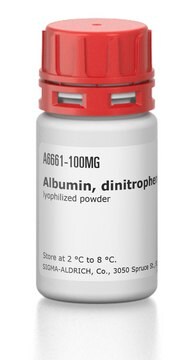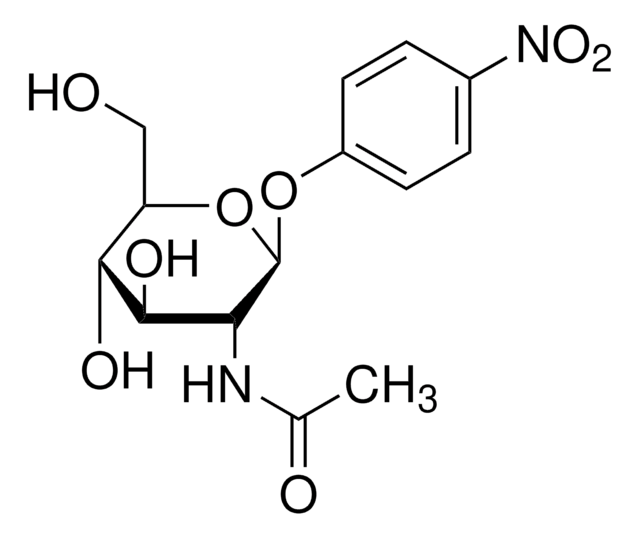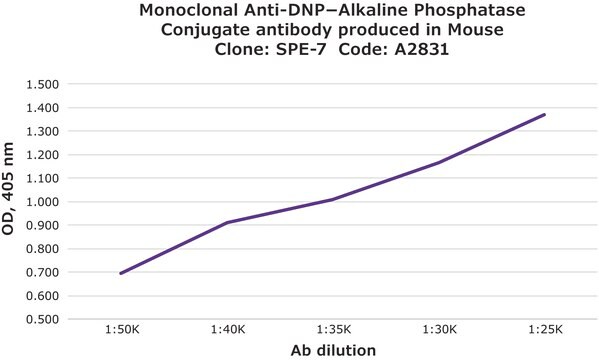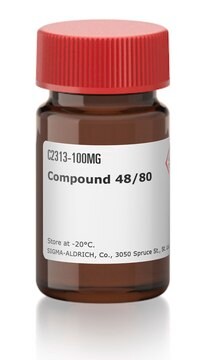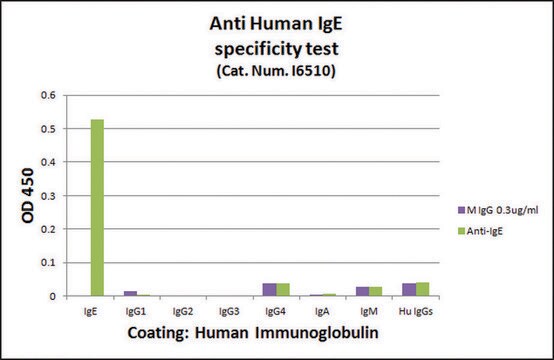D8406
-NotTranslated-
IgE isotype, ~1 mg/mL, clone SPE-7, affinity purified immunoglobulin, buffered aqueous solution
Sinónimos:
Anti-Dinitrophenyl, Anti Dnp Ige, Anti-DNP IGE - Monoclonal Anti-Dinitrophenyl antibody produced in mouse, Anti-Dnp Ige, Monoclonal Anti-DNP
About This Item
Productos recomendados
biological source
mouse
Quality Level
conjugate
unconjugated
antibody form
affinity purified immunoglobulin
antibody product type
primary antibodies
clone
SPE-7, monoclonal
form
buffered aqueous solution
concentration
~1 mg/mL
technique(s)
indirect ELISA: 0.05-0.1 μg/mL using using 0.5 μg/well DNP-BSA as the coating antigen and 1 μg/mL Monoclonal Anti-Mouse IgE, Peroxidase conjugate as the detector antibody.
isotype
IgE
shipped in
dry ice
storage temp.
−20°C
target post-translational modification
unmodified
¿Está buscando productos similares? Visita Guía de comparación de productos
General description
IgE gene is encoded on human chromosome 14. IgE is the least circulating antibody, but critical for eliciting hypersensitivity reaction against allergens.
Immunogen
Application
Western Blotting (1 paper)
Monoclonal antidinitrophenyl specific mouse IgE has been used in degranulation of rat mast cells using microplate reader and fluorescence spectrophotometer.
Biochem/physiol Actions
Physical form
Storage and Stability
Disclaimer
¿No encuentra el producto adecuado?
Pruebe nuestro Herramienta de selección de productos.
Storage Class
12 - Non Combustible Liquids
wgk_germany
nwg
flash_point_f
Not applicable
flash_point_c
Not applicable
Certificados de análisis (COA)
Busque Certificados de análisis (COA) introduciendo el número de lote del producto. Los números de lote se encuentran en la etiqueta del producto después de las palabras «Lot» o «Batch»
¿Ya tiene este producto?
Encuentre la documentación para los productos que ha comprado recientemente en la Biblioteca de documentos.
Nuestro equipo de científicos tiene experiencia en todas las áreas de investigación: Ciencias de la vida, Ciencia de los materiales, Síntesis química, Cromatografía, Analítica y muchas otras.
Póngase en contacto con el Servicio técnico